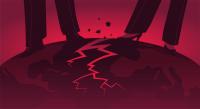
Economists at PGIM Fixed Income have suggested converting Ukraine’s dire debt obligations into new debt. These so-called “freedom bonds” could be backed by frozen Russian assets, according to the bond house.
The economic damage caused by the war in Ukraine will cripple the country and seriously jeopardise a victory, “unless steps are taken to address the rising debt burden,” say Daleep Singh, chief global economist, and Giancarlo Perasso, lead economist Africa and the former Soviet Union at PGIM Fixed Income.
Any proposal involving frozen Russian assets would receive great interest in Luxembourg, where the government last November said it had frozen some 5.5 billion euro in Russian assets. That is about one third of all Russian assets frozen in the EU.
A Ukrainian Brady plan
The economists propose a modified version of the Brady Plan to restructure Ukraine’s private debt obligations.
The Brady plan takes its name from former US Treasury Secretary Nicholas Brady. Led by the US Treasury in 1989, it was agreed that creditors (mainly commercial banks) of over-indebted developing countries would be better off if they collectively swapped existing claims for new instruments with a greater chance of being repaid.
 “We advocate a similar restructuring for Ukraine’s external debt, but with a twist,” Perasso said. Where, under the Brady plan, US government bonds were offered as collateral, they could now be frozen Russian reserves, consisting mainly of US, UK, European and Japanese government debt.
“We advocate a similar restructuring for Ukraine’s external debt, but with a twist,” Perasso said. Where, under the Brady plan, US government bonds were offered as collateral, they could now be frozen Russian reserves, consisting mainly of US, UK, European and Japanese government debt.
“The Russian reserves would be used as a guarantee in the - in our view unlikely - event that Ukraine does not fulfil its obligations under the new terms,” Perasso told Investment Officer.
This is necessary to “guard Ukraine from Putin’s kleptocracy”, Perasso said. Indeed, the current foreign debt is unsustainable from 2024 onwards, according to PGIM economists.
Ukraine public debt unsustainable
In September 2022, Ukraine’s external debt stood at around $60 billion. The country’s GDP has since collapsed, by about 40 per cent. Ukraine currently has $22 billion in foreign currency debts with foreign lenders and needs to make nearly $18 billion in payments on these debts over the next five years. That totals more than three-quarters of its foreign exchange reserves.
Ukraine has paused repaying its foreign debt obligations to private creditors until August 2024, but according to Singh and Perasso, that pause is not enough. “Ukraine’s recovery needs are likely to be several times greater than what advanced democracies and international financial institutions such as the IMF and the World Bank can provide,” says Perasso.
Institutional investors can help
Perasso: “Large-scale debt restructuring, including deep reductions in the amount outstanding, is necessary to secure the country’s future.” This is where institutional investors can help, according to the economist.
The benefits of a successful restructuring and issuance of new debt, according to the economists, would include a lower debt burden for Ukraine, more financial room for the country’s war effort and reconstruction, and a greater chance of repayment for private creditors.
Perasso thinks it is unlikely that Ukraine will not be able to repay the new bonds. PGIM expects Ukraine’s economy to grow strongly after peace is finally concluded, so the country will have funds to pay the bonds.
“The yield will be lower than the ‘pure’ market yield. Once the freedom bonds are fully repaid, the guarantee will no longer be needed and the Russian foreign exchange reserves supporting the freedom bonds can be returned to Russia, unless the peace treaty sets other conditions,” Perasso said.
Details needed
The details of the restructuring offer, such as the coupon and maturity of the new bonds, would be negotiated between the Ukrainian authorities and a committee of creditors within the framework of an IMF programme.
Asked whether PGIM itself would be willing to enter the product, Perasso replied neither in the negative nor in the affirmative. “We evaluate, as with any other product, the prospects for the country’s economy, capacity and willingness to pay, and check whether the return is appropriate,” Perasso said.
This article originally appeared in Dutch at InvestmentOfficer.nl.












